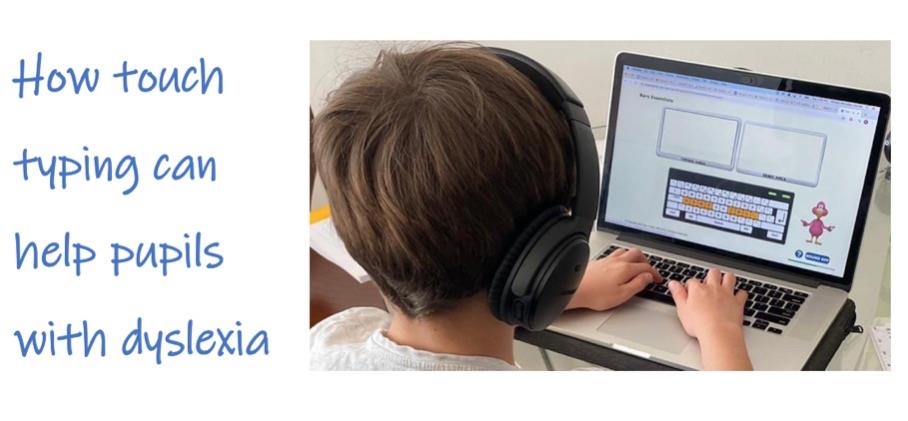
Dyslexia is a Specific Learning Disability/Difference (SpLD) and affects approximately 10% of the population. It is often defined as a common language processing disorder which primarily hinders the learning of literacy skills, such as reading, writing and spelling but can also affect other areas.
Children get diagnosed with dyslexia at different stages of their school life. Until they are, it can significantly impact their school work. They struggle to learn due to various challenges such as processing or visual disturbances. If you think about it, how can a child learn to read, spell, write or type when they are struggling to process information, or when the letters in front of them are blurred and jumping around the page.
There are various strategies teachers can adopt to help support and meet their challenges. One simple and fundamental skill they can teach, that can produce quick and effective results within a relatively short space of time and which can completely transform a child’s school life and increase confidence and self-belief is touch typing.
Touch typing - a game-changer for individuals with dyslexia
This advanced typing technique eliminates the need and challenges associated with writing by hand and offers a new medium for getting thoughts and ideas onto paper easily and efficiently - boosting confidence and moral.
Pupils with dyslexia may face the following Challenges:
How touch typing can benefit dyslexic pupils
Levels the playing field
Touch Typingis a ‘hidden’ subconscious skill that can help level the playing field for pupils with special educational needs but it is often overlooked.
Composing whilst writing
The important aspect of touch typing is not what the fingers are doing but what is happening in the brain.
When pupils learn how to touch type, the skill is automatised and transferred to their sub-conscious, leaving their conscious minds free to concentrate on more important tasks, such as planning, composing, processing, proofing reading and editing. It improves the quality, quantity and their overall performance in assignments and exams.
Easy correction
A paper littered with crossings out and scribbles can prove hard to read back, interrupt thought and workflow and can cause embarrassment and frustration. Touch typing helps the above and eliminates the need for neat handwriting. Once learned, fingers automatically move to the right keys and instinctively know when they have made a mistake and pressed the wrong key - editing is normally immediately. Additionally, when using a computer, spell checking tools are also available, highlighting mistakes and offering alternatives. Errors can be easily edited without messy crossings out, resulting in neat and presentable work - automatically boosting confidence and self-esteem.
A different learning process
Touch typing uses a different memory skill than that of traditional methods. It eliminates the need for the decoding process that often causes trouble when reading. With the repetition of touch typing real words, spelling and vocabulary are engrained to memory. They simply become a series of finger movements and patterns on a keyboard, dramatically reducing the likelihood of transposing and misspelling words.
Reorganisation of thoughts
Pupils with dyslexia have a particular thought process. They prefer to work in a non-linear fashion. They jot down their thoughts first as a series of disconnected conceptions and then structure them into an organized answer/essay. Touch typing and using a computer allows them to this more easily.
Increases productivity
Once the skill is mastered, quick and efficient touch typing can reduce the amount of time spent on a piece of work and often increases productivity. Additionally, when used in exams, subconscious touch typing skills enables pupils to type quickly and efficiently, allowing them a greater chance of finishing their paper.
Why choose KAZ SEN/Dyslexia touch typing software?
KAZ’s SEN/Dyslexia touch typing software was developed with advice and guidance from the Dyslexia Research Trust. It teaches typing skills whilst minimising visual disturbances by means of a unique ‘preference screen’, tailoring the course for maximum visibility comfort before pupils begin the course
It was scientifically developed through research by a team of experts responsible for producing 55 RSA/NVQ level computer and office skill courses
It was trialled and tested by 18,000 students per year, over 3 years, in 300 private training centres across the UK before it was released to the market
It’s safe and secure for online learning - KAZ are members of ICO.org and ensure your pupil’s data is protected
It uses a multi-sensory and proven Accelerated Learning teaching method, incorporating both ‘brain balance’ and ‘muscle memory’
It’s simple in presentation, easy and quick to use, delivered in a light-hearted manner and has been designed not to overload the working memory
It includes a special module for developing automaticity and building muscle memory
It’s affordable
It’s available over all platforms: Download for Mac and PC, SCORM for LMS and Online, the new mode of learning, allowing practice from both home and school
With the right help, support and skills, pupils with dyslexia can gain confidence and self-belief and develop coping strategies to overcome, achieve and succeed.
https://kaz-type.com/products/dyslexia-edition
Copyright KAZ Type Limited 2025. KAZ is a registered trade mark of KAZ Type Limited.
Developed by : STERNIC Pvt. Ltd.